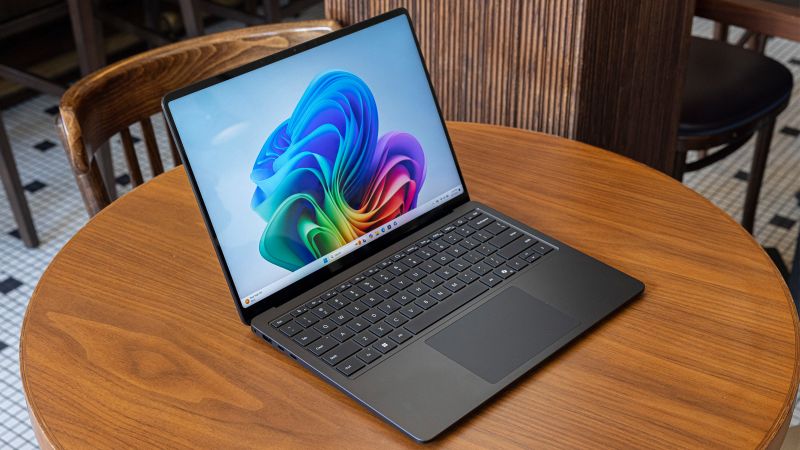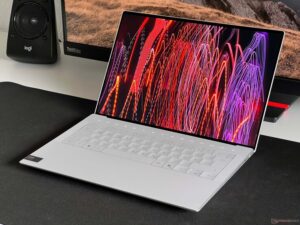In the highly competitive arena of premium laptops, few rivalries have been as compelling as the one between Apple’s MacBook Pro and Microsoft’s Surface Book. For years, the MacBook Pro reigned as the undisputed king, the default choice for creative professionals, developers, and power users who demanded performance, reliability, and a seamless user experience. It was the benchmark against which all other high-end notebooks were measured. Then, in 2015, Microsoft threw down the gauntlet with the Surface Book, a device that wasn’t just another Windows laptop but a bold, innovative statement. It was a direct challenger, meticulously engineered to not only match the MacBook Pro in power and prestige but to offer something fundamentally different: unparalleled versatility. This article delves deep into this historic battle, analyzing the design philosophies, performance metrics, ecosystem advantages, and target audiences of these two titans to answer the ultimate question: Did the Surface Book truly have what it took to dethrone the MacBook Pro?
A Tale of Two Designs: Innovation vs. Refinement
At the heart of the conflict between the Surface Book and the MacBook Pro lies a fundamental difference in design philosophy. Apple has long championed iterative refinement, perfecting a singular form factor, while Microsoft burst onto the scene with a radical, transformative approach that challenged the very definition of a laptop.
The MacBook Pro: The Epitome of Refined Minimalism
The MacBook Pro is an icon of industrial design. Its aluminum unibody construction, first introduced in 2008, has become synonymous with premium build quality. Every curve, every seam, and every surface feels deliberate and meticulously crafted. Apple’s approach has been one of gradual evolution, not revolution. They focused on making the device thinner, lighter, and more powerful without straying from its core identity as a pure, focused notebook. Key features that solidified its reputation include:
- Build Quality: The rigidity and precision of the single-block aluminum chassis provide a sense of durability and luxury that few competitors can match.
- The Magic Keyboard and Force Touch Trackpad: After a controversial period with the butterfly keyboard, Apple returned to the highly acclaimed Magic Keyboard, offering a comfortable and reliable typing experience. The Force Touch trackpad remains the industry’s best, with its massive size, haptic feedback, and flawless gesture recognition.
- Port Philosophy: For several generations, Apple controversially embraced a future of minimalism, equipping the MacBook Pro exclusively with Thunderbolt/USB-C ports. While powerful and versatile, this decision alienated many professionals who relied on legacy ports like USB-A, HDMI, and SD card readers. More recent models have seen Apple walk this back slightly, reintroducing some of these ports in response to user feedback.
The MacBook Pro’s design communicates a clear message: this is a tool for focused, high-performance work, perfected over more than a decade of refinement.
The Surface Book: The Hybrid Maverick
Microsoft knew it couldn’t win by simply creating a better MacBook clone. Instead, it created a new category of device. The Surface Book’s design was a spectacle of engineering ambition, defined by two standout features: the Dynamic Fulcrum Hinge and the detachable display.
- The Dynamic Fulcrum Hinge: This unique, snake-like hinge was an engineering marvel. It allowed the device to maintain the stability of a traditional laptop while also enabling the screen to be detached. It didn’t fold flat like other 2-in-1s; it was a robust connection that housed additional battery and processing power.
- The Detachable “Clipboard”: With the press of a button, the Surface Book’s stunning PixelSense display detached from the keyboard base, transforming into a remarkably thin and light Windows tablet. This “Clipboard” mode contained the CPU, RAM, and storage, making it a fully functional computer on its own. The keyboard base often housed a powerful discrete NVIDIA GPU, which would supercharge the device when docked.
- Touch and Pen Integration: Every Surface Book was designed from the ground up for the Surface Pen. This wasn’t an afterthought; it was a core part of the experience. For digital artists, engineers, and students, the ability to draw, sketch, and take handwritten notes directly on a color-accurate, high-resolution screen was a game-changer that the MacBook Pro simply couldn’t offer.
The Surface Book’s design was a bold declaration that a premium device could be both a powerful laptop and a creative tablet without compromise. It was built for versatility and a hands-on, tactile workflow.
The Engine Room: A Battle of Silicon and Software

A premium laptop is more than just its chassis; it’s the synergy between its hardware and software that defines the user experience. Here, the deep-rooted differences between the Apple and Microsoft ecosystems come into sharp focus.
Operating Systems: The Soul of the Machine
The choice between macOS and Windows is one of the most significant factors for any user. macOS is renowned for its fluid animations, intuitive user interface, and robust security. Its greatest strength lies in its tight integration with Apple’s hardware and the broader ecosystem. Features like Handoff, AirDrop, and Universal Control create a seamless workflow for users invested in iPhones, iPads, and other Apple devices. Furthermore, macOS is home to industry-leading creative software like Final Cut Pro and Logic Pro X, which are highly optimized for Apple’s hardware.
Windows, on the other hand, is the world’s most ubiquitous operating system, offering unparalleled software compatibility and hardware flexibility. From business applications to PC gaming, virtually everything runs on Windows. With the Surface Book, Microsoft tailored the Windows 10/11 experience for touch and pen input, with features like Windows Ink Workspace making the stylus a first-class citizen. Windows Hello’s facial recognition login was also a standout feature, offering a futuristic and seamless way to secure the device.
Processing Power and Graphics: Intel vs. Apple Silicon
For much of its lifespan, the Surface Book series utilized high-performance Intel Core i5 and i7 processors, paired with optional discrete NVIDIA GeForce GPUs housed in the keyboard base. This setup provided substantial power for tasks like video editing, 3D modeling, and light gaming. The clever engineering allowed the device to operate as a lightweight tablet for basic tasks and then tap into the GPU’s power when docked, a concept Microsoft called “dynamic graphics switching.”
However, the entire performance landscape was upended by Apple’s transition to its own custom silicon. Starting with the M1 chip, Apple’s MacBook Pros achieved a level of performance and power efficiency that traditional x86 chips from Intel struggled to match. The unified memory architecture, combined with dedicated processing cores for tasks like video encoding (ProRes), gave the new MacBook Pros a staggering advantage in creative workflows. A MacBook Pro running on Apple Silicon could handle complex 4K video timelines on battery power for hours, a feat that was simply out of reach for most Windows laptops, including the Surface Book. This move solidified the MacBook Pro’s position as the performance champion, particularly for media-heavy tasks.
Display Technology: Pixels and Productivity
Both devices feature breathtaking displays, but they are optimized for different purposes. The MacBook Pro’s Liquid Retina XDR display is a marvel of color accuracy, brightness, and contrast. With its support for the P3 wide color gamut and ProMotion technology (adaptive refresh rates up to 120Hz), it is the gold standard for photo and video professionals who require perfect color representation.
The Surface Book’s PixelSense display, however, has a secret weapon: its 3:2 aspect ratio. This taller screen is significantly better for productivity tasks like writing documents, coding, and browsing the web, as it shows more vertical content and reduces the need for scrolling. It also boasts an extremely high pixel density and, most importantly, is a fully functional touchscreen with best-in-class pen support. For anyone whose work involves digital ink, the Surface Book’s display offered a fundamentally more interactive and versatile canvas.

Who Are They For? Defining the Ideal User
Ultimately, the choice between these two powerhouses comes down to individual workflow and priorities. They are both premium, expensive machines, but they cater to distinctly different types of professionals.
The Creative Professional’s Sanctuary: The MacBook Pro
The MacBook Pro remains the preferred tool for a specific, and very large, segment of the creative industry. Its ideal user is someone deeply embedded in a workflow that demands maximum, sustained performance and ecosystem continuity.
- Video Editors: The optimization of Final Cut Pro and Adobe Premiere Pro on Apple Silicon is unmatched. The ability to scrub through multiple streams of high-resolution footage without lag is a key selling point.
- Music Producers: Logic Pro X, combined with the low-latency audio performance of macOS, makes the MacBook Pro a staple in recording studios worldwide.
- Developers: For those developing for iOS, iPadOS, or macOS, a Mac is not a choice but a requirement.
For these users, the raw power, efficiency, and the seamless link between their laptop, phone, and tablet are paramount. The MacBook Pro is a specialized instrument designed to execute these tasks with unparalleled speed and reliability.
The Versatile Innovator: The Surface Book

The Surface Book, and its successor the Surface Laptop Studio, appeals to a different kind of creator—one who values flexibility and a multi-modal workflow above all else.
- Digital Artists and Illustrators: The combination of the Surface Pen and the detachable screen makes the Surface Book a portable digital drawing canvas. It directly competes with dedicated drawing tablets like those from Wacom.
- Engineers and Architects: The ability to run full desktop CAD software and then detach the screen to present plans or make annotations on-site is incredibly powerful.
- Students and Academics: Taking handwritten notes in class, annotating PDFs, and then docking the screen to write a full research paper on a single device is the ultimate student workflow.
This user needs a device that can adapt to different contexts throughout the day. They are a writer in the morning, an artist in the afternoon, and a presenter in the evening. The Surface Book was built for them.
The Final Verdict: A Shared Throne?
So, did the Surface Book succeed in dethroning the MacBook Pro? The answer is more nuanced than a simple yes or no. It did not replace the MacBook Pro as the default choice for the core creative market of video editors and music producers. The introduction of Apple Silicon widened the performance gap in those specific areas, cementing the MacBook Pro’s dominance.
However, to say it failed would be a massive understatement. The Surface Book succeeded in a far more important way: it shattered the perception that a premium, desirable, and innovative computer had to come from Apple. It carved out an entirely new kingdom for itself by proving that a market existed for a high-performance, versatile hybrid device. It forced the industry, including Apple, to take Windows hardware seriously again and pushed the boundaries of what a laptop could be. It legitimized the 2-in-1 category at the highest end and created a loyal following of users who couldn’t imagine their workflow without its unique blend of power and flexibility.
In the end, the Surface Book didn’t need to dethrone the king. It became a king in its own right, ruling over a new territory of versatile computing. The rivalry didn’t result in a single winner but in a richer, more diverse market with two exceptional, yet fundamentally different, visions for the future of personal computing.













